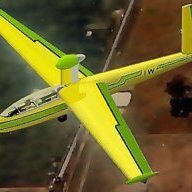Thanks, Kaz. This might be an appropriate point for a little history lesson:
In 1993, the Howard Government had, in its election platform, the introduction of an "American-style experimental category" into the Australian Civil Aviation Regulations; the SAAA and AOPA had been pushing for this, for decades.
The Howard Govt got into power in 1994; and in 1996 the then Minister, John Sharp, set up the Review of Regulations; and one of its marching orders was to make good that election promise. The American Experimental "category" exists because the U.S. constitution gives the individual the right to elect to take a risk, if he so chooses. Australians wanted that same right, in regard to recreational aircraft. The US experimental "category" appears in FAR Part 21, regulations 21.191 thru 21.195. (They are, nowadays, in the same place in CASR Part 21). However, Australia did not have a Part 21 in its regulations in 1996, because the people who wrote Australia's CARs did not dream that anybody here would be so silly as to to actually build an aeronautical product; the regulations were written about importing such products and maintaining them. (Oh, there were a couple of makers of wood propellers, but they were covered by ANO 108.28 and 108.29-which still exist, by the way).
The whole thrust of the CARs was paternalistic - protecting people from themselves, whether they wanted this or not. This was almost a religion within DCA/CAA/CASA; and the problem was (and still is) that the experimental provisions turn that completely upside down; they are based on voluntary acceptance of risk - just as is slowly becoming recognised for any "inherently dangerous" recreational activity, as is shown by the precedents set in NSW by Campbell Vs Rodney Victor Hay, and Echin vs STGC. So we have this little "bubble" of rebellion (or freedom, take your pick) buried inside a vast body of wholly paternalistic regulations that are fundamentally designed to protect Auntie Flo when she flies off to visit her grandchild. Some people have difficulty in grasping this temporary reversal of gravity as one passes across this little section of the CASRs.
So ANY aircraft that is essentially "experimental" in nature - however disguised by an E24 or a 19 registration, or by any other means, should have a prominent placard stating that it does not comply with normal aviation safety standards, and persons flying in it do so at their own risk. (I wanted the words "Abandon hope all ye who enter here", but I was overruled, and the message is toned down more that I think it should be, but a message is required to be there).
This also necessitated that CASA be given an immunity to negligence in regard of these aircraft, in the form of CASR Part 201.003.
The message has not yet fully seeped through to the courts (edited - Mod) - or, indeed to the drafters of the Jabiru engine Instrument, in that they included experimental aircraft. But it is quite clearly evident in CASA Advisory Circular 21.10; and anybody who is still having trouble with the whole idea should read that AC.
(edited - Mod)
Some manufacturers in the U.S.A. wanted to be able to sell what amounted to sub-standard aircraft as fully-manufactured products rather than as 51% rule kits; so they sought a half-way house - the first attempt was the Primary category; but the sole example with an FAA primary category TC was (and still is) the Australian Seabird Seeker. So they tried again, and the "consensus standard" put out by the ASTM was the result - and this made things a lot simpler for new entrants to this manufacture industry; but make no mistake, these are sub-standard products with a limited imprimatur, and limited application. They are only a whisker above experimental, and if you modify them without the manufacturer's consent, (or if the manufacturer ceases to exist) they revert to experimental.







